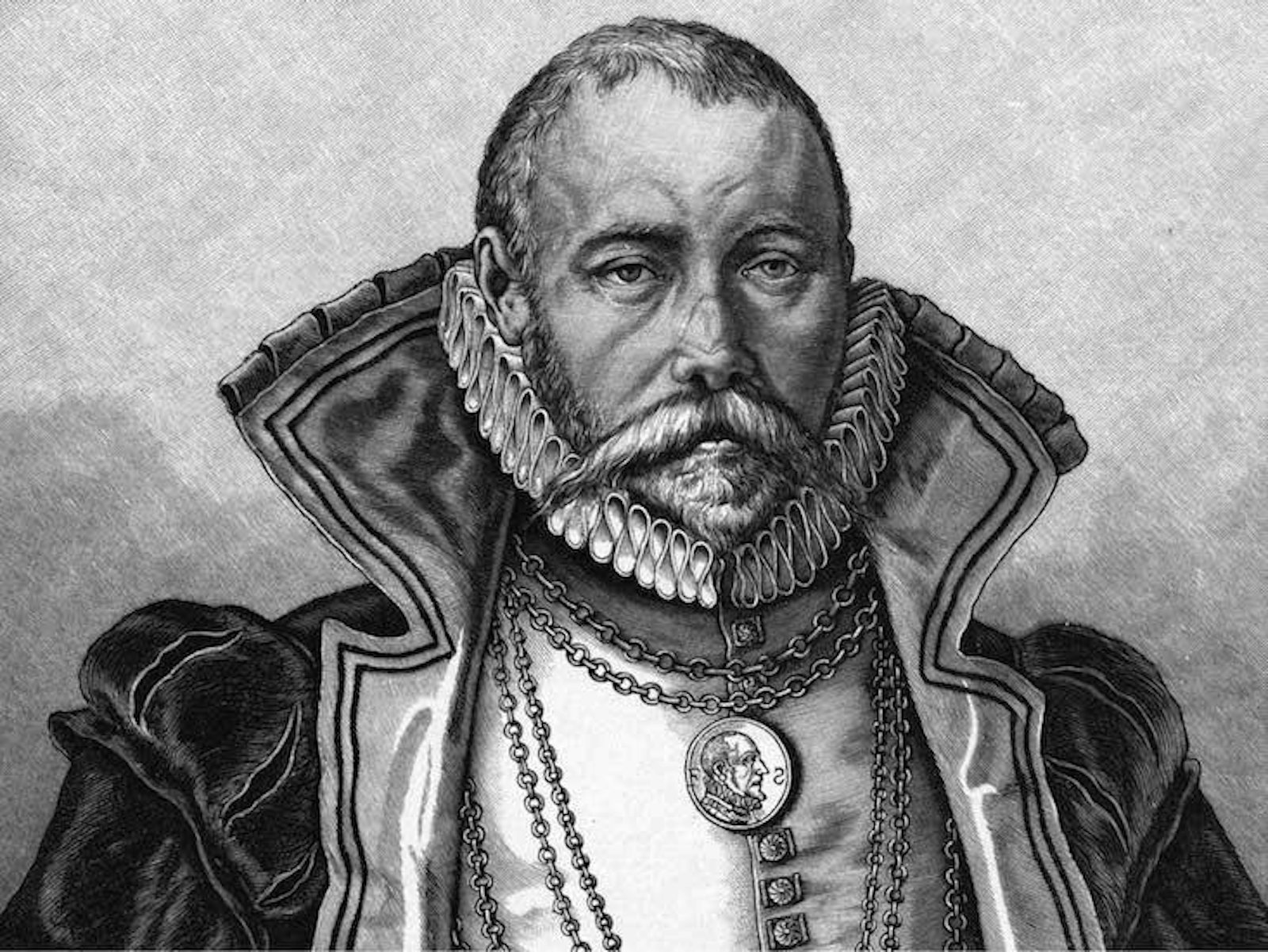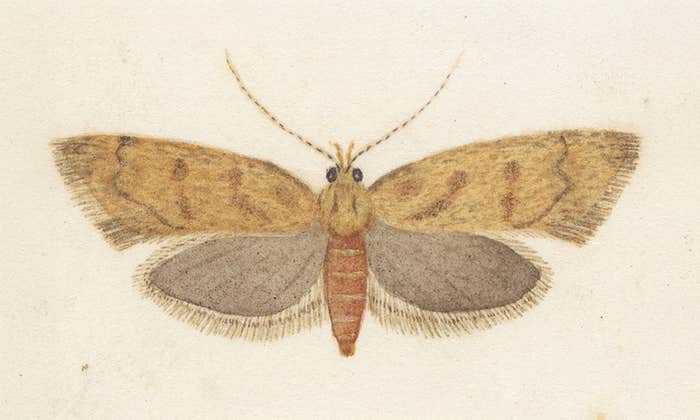Something is rotten in Denmark, but not to worry, it’s just the remains of astronomer Tycho Brahe.
Despite being dead for over 400 years, this Renaissance astronomer continues to captivate scientists, historians, and the public. Part of his fame is due to his scientific credentials. Brahe is the father of modern observational astronomy, known for accurately plotting the positions of nearly 800 stars, all without the use of a telescope. But Brahe also fascinates us for the same reason that celebrities always have: He led a wildly colorful life. Brahe’s fame unreeled before Us Weekly, but he was one astronomer who knew how to generate headlines.
The son of a nobleman, Brahe caused a scandal for his common-law marriage to the daughter of a peasant; he lost most of his nose in a duel after quarreling with his cousin at a wedding and wore a fake brass nose for the rest of his life;1 and guests to his extravagant island castle-observatory wrote that he had a dwarf as a jester and kept a tame elk as a pet. When it came to astronomy, Brahe agreed with Copernicus’ heliocentrism—planets in the solar system orbit the sun—with one exception. He staunchly believed the sun orbited the earth.
Brahe died suddenly in 1601 from what appeared to be either a bladder or kidney infection. His illness surfaced after he refused to leave a banquet in Prague, out of fear of appearing rude, to relieve himself.
In 1993, scientists examining pieces of hair from Brahe’s beard, collected when he was first disinterred from his Prague tomb in 1901, claimed to find high levels of mercury in the hairs. Rumors swirled that Brahe might have been intentionally poisoned—perhaps by King Christian IV himself, ruler of Denmark and Norway, because of rumors that the scientist had an affair with the royal mother. Brahe’s soon-to-be-famous assistant Johannes Kepler, who wanted access to data that Brahe guarded jealously, was also suspected of killing him.
Now a new theory has emerged. In November 2012, the journal Archaeometry, apparently under the spell of Agatha Christie, added a new entry to the annals of Tycho Brahe with an article titled “Was He Murdered or Was He Not?” Whether Brahe died from mercury poisoning was the first answer that Kaare Lund Rasmussen, a biological anthropologist and analytical chemist at the University of Southern Denmark, and his colleagues sought to prove. Their research produced a conclusive “No.” Mercury concentrations in the astronomer’s hair were between 2-16 micrograms per gram, higher than normal levels in modern humans (3-4 micrograms per gram) but well below fatal levels. Compare Brahe’s exposure to that of legendary scientist and known alchemist Sir Isaac Newton, believed to have suffered non-lethal mercury poisoning due to his alchemical work. Analysis of Newton’s beard in 1979 found mercury concentrations as high as 197 micrograms per gram.
In a follow-up study, published in November, the team investigated the hypothesis that Brahe dabbled in alchemy. More specifically, they wanted to know if Brahe might have self-administered Paracelsian medicine, as he is known to have brewed at least one Paracelsian elixir, called Elixir Tychonis. This branch of medicine prescribed metals and minerals for curative purposes—most often sulphur, salt, and mercury. (Paracelsus, a Swiss-German physician whose work formed the early roots of toxicology, believed these substances were the root of all diseases.) Gold was another popular ingredient, and one mixed into Elixir Tychonis, as it was believed to confer immortality.
Rasmussen and his colleagues’ results were compelling: Brahe’s hair contained higher levels of iron, cobalt, arsenic, silver, and gold than normal. What’s more, his levels of iron, arsenic, gold, and silver declined over the last two months of his life, a pattern that was also seen in his mercury levels. The results suggest that something about Brahe’s life changed two months before his death, something that halted his normal metal exposure.
“This is a different story than what has always been the story line of the death of Tycho Brahe, which was that an acute event set in at the dinner party of Count Rosenberg 11 days before his death,” said Rasmussen. “Our investigations cast a new light—on a still unknown event some two months before his death.”
What that event might have been is open to speculation. Did Brahe change habits, diet, or medication? Did he stop self-administering the elixirs he was brewing? Or did a mysterious illness set in earlier than previously believed, keeping him out of his lab, and leading to the painful events that began 11 days before his ultimate end?
Rasmussen said finding the root of this change is now the work of historians, perhaps through a re-examination of historical documents about, and written by, Brahe. Nevertheless, Rasmussen’s study managed to keep Brahe’s star shining bright. In December 2016, an article titled “Famed astronomer Tycho Brahe literally had golden hair, study says,” was published by Fox News.
Claudia Geib is a freelance science writer based out of Boston. Follow her on Twitter @cm_geib.
Footnote
1. Brahe’s nose was originally reported to be made of silver and gold. However, when Kaare Rasmussen’s team first examined his body in 2010, they found high concentrations of copper and zinc in the small bone that remained of Brahe’s nose, suggesting that the false schnoz was more likely brass.
Lead image: BIT Teatergarasjen / Jacques de Gheyn II / Wikicommons




























